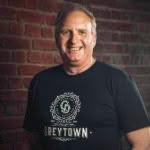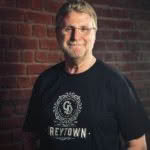Stainless steel flasks and old-world names make this local gin company one to look out for
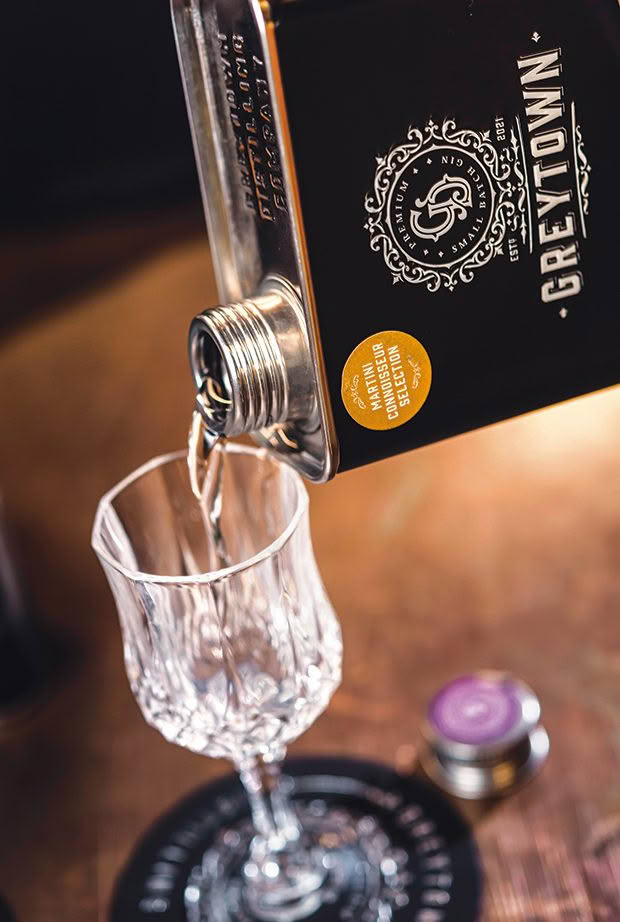
A gin, owned and made by locals in one of the country’s most go-ahead villages, is the first distilled beverage off the block of many more that might come to define the locale
Words: Kate Coughlan Photos: Mike Heydon
When Adam and Millie Blackwell travel, as they’re enthusiastically prone to do, with work taking them to the United States for six months a year, a martini made with local gin is a priority.
“We visit a new town, find somewhere to eat, sit up at the bar and ask the bartender, ‘What gin is made locally?’ The resulting martini is unique, and its taste defines the town for us. What we liked about the town is recalled in the experience,” says Adam.
Gin is an interesting beverage because its range of tastes is as wide open as a bare Wairarapa paddock. A minute change to the recipe — half a teaspoon rather than a full teaspoon of honey, for example — will change the flavour profile altogether. Gin is a blank palette upon which to paint a variety of palate-pleasing flavours.
“Pretty much every gin we try has a uniqueness to it,” says Adam. He and Millie are significant in branding Greytown as a village of books, bikes and boutique delights — he with Blackwell and Sons cycle emporium and she with Mrs Blackwell’s Village Bookshop. They are also responsible for several civic initiatives, such as the popular Greytown mid-winter Festival of Christmas. In July this year, approximately 60,000 visitors celebrated starry nights, light shows, glowing decorations, entertainment, warming glasses of mulled wine, eating and shopping.
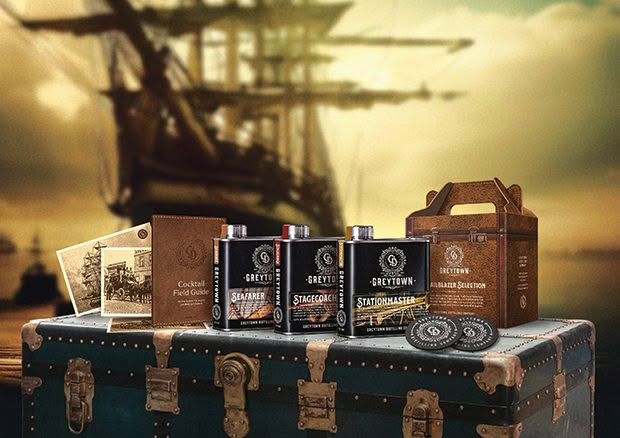
Greytown’s men of spirituous liquors with a lineup of Greytown Distilling Company’s romantic-travel Seafarer, Stagecoach and Stationmaster gins.
It is not clear exactly when Adam’s brainwaves washed up on the shore with “GIN” as a potential new addition to the village’s line-up of attractions. Likely as not, it was upon one of those bar stools in a new town, martini in hand. As is often the way with Millie and Adam, talk turns to growing Greytown’s Main Street’s prosperity beyond boutiques, bikes and books. Though, be assured, these are all excellent pursuits indeed.
“There does need to be consideration for industries or at least business operations that create jobs and provide another reason to see a place like Greytown. To complement the region, we wouldn’t want to be an extension of Martinborough’s Wine District. We thought, ‘Wouldn’t having a Greytown-branded distillery business be lovely?’ A unique drink is something visitors can enjoy about a town.”
They presented the idea to Greytown’s First Gentleman of Gin, Neil Catherall. Neil and several mates launched and later sold the successful and now internationally distributed Lighthouse Gin brand 20 years ago (NZ Life & Leisure, September/October 2010). Neil pointed Adam towards retired software engineer Peter Warren, who, as an avid moonshiner, was learning the chemistry side of gin making from Neil. “I’d love to be making gin as my retirement gig,” replied Peter, who Adam says makes admirably restrained and elegant gins.
“Once I knew I had a maker involved, Gavin Hodder joined me as business manager, and I went through social media and put it out there that we were thinking of establishing a Greytown gin brand and asked who would like to be part of it.”
Eager locals met at the local White Swan Hotel, and a few slides were shown by Adam, revealing the look and feel of the brand and detailing how much money they’d need to get going… “Anyone still in?’ he asked and was overwhelmed with “Yeah, count me in” enthusiasm.
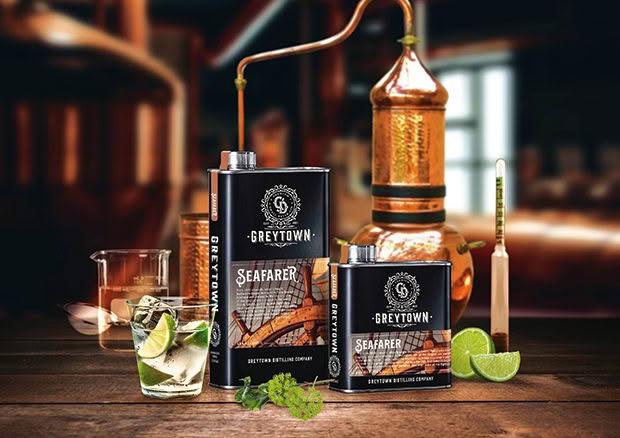
“We raised enough money to get the company going. So it is a Greytown entity in every way, owned and supported by Greytown people.”
The challenge then was to create a distinctive brand and flavour. “Gin is a clean palette, and while the juniper-forward taste of the traditional London dry gins has ruled ascendant for hundreds of years, today’s craft gin movement is, just like the craft beer movement, about changing things up. The gins our parents drank — Gordon’s, Bombay Sapphire, for example — are classic gin tastes, but people love discovering something in new gins,” says Adam.
Adam and Millie, always prone to looking back to see the way forward, see the history of gin as the non-conformist tipple of choice. “The early European settlers arriving from the 1860s onwards left their home countries with plenty of barrels of booze accompanying them on board, and it was a safer drink than ship’s water. But once they arrived, they needed to figure out how to make alcoholic beverages. Gin, like beer, can be made quickly, while whisky needs to go into a barrel for a decade or more.
“So here we are, the modern-day non-conformists, making gin right in the middle of Greytown in a shed that was due for demolition, and instead of putting it in big heavy glass bottles, we are using lightweight recyclable stainless steel flasks. They’re easily chilled, unbreakable, protect the botanicals from light damage, cheaper and safer than glass to ship.”
A small portion of the Blackwell and Sons cycle emporium on Greytown’s Main Street was reworked last year as a gin-tasting room — mainly because they couldn’t find anywhere else in time for launch.
Peter’s first gins, making up the Greytown Distilling Company Groundbreaker Collection, which pays homage to those who established the brand, were released in December last year. Sales quickly exceeded the modest targets Adam had set for shareholders. Then, the mid-winter Festival of Christmas happened, and further targets were exceeded. Gin, obviously, is not merely a summer drink.
- Adam Blackwell, instigator and enthusiast.
- Gavin Hodder, manager.
- Peter Warren, distiller.
Peter’s third range of three gins was released in November and, again, were themed for old-time romantic travel and aimed at an audience appreciating distinctive flavours rather than strictly traditional gin tastes. People follow a particular gin as part of their personal branding these days, says Adam.
The company currently has a growing list of employees; besides Peter, local business consultant Gavin Hodder manages the day-to-day business and the tasting room with Shane Kelly, and Peter is training assistant distiller Adam Birchall.
The long-term goal is for the Greytown Distilling Company to make a range of alcoholic drinks — enough to add another layer to the Greytown visitor experience and boost its reputation as a distilled or brewed beverages zone. Cider is of particular interest due to the town’s heritage as an apple-growing region and the need to find a high-value use for non-premium grade fruit. Bourbon, notes Adam, is one of the world’s fastest-growing spirits by volume. However, only United States-distilled, predominantly corn-based liquor, aged for four years in new American oak barrels, can be legally called bourbon… maybe a bunch of non-conformists might call it an American-style whiskey?
Meanwhile, the gin revolution rolls through this charming village, allowing more visitors to taste the terroir (or buy it online), something not yet available in the big liquor retailers. Maybe one day, but that’s the story so far.
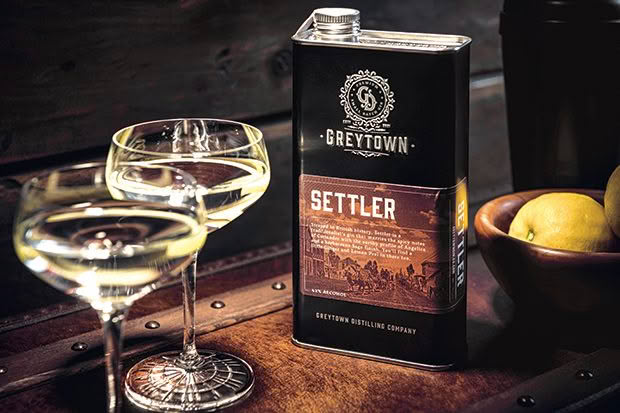
WHAT IS GIN?
Gin is made with alcohol distilled from a neutral grain, such as wheat or barley. Botanicals are infused with the raw spirit to release distinctive flavours. When juniper is the first flavour to hit the palate, it is called a London Dry-style gin. When other botanical flavours are more assertive, it is a craft gin.
THE PERFECT MARTINI
Adam and Millie’s recipe for the perfect martini? Combine 75ml Greytown Distilling Company Gin and 25ml dry vermouth with a dash of orange bitters (optional) and a twist of lemon.
Love this story? Subscribe now!
 This article first appeared in NZ Life & Leisure Magazine.
This article first appeared in NZ Life & Leisure Magazine.

